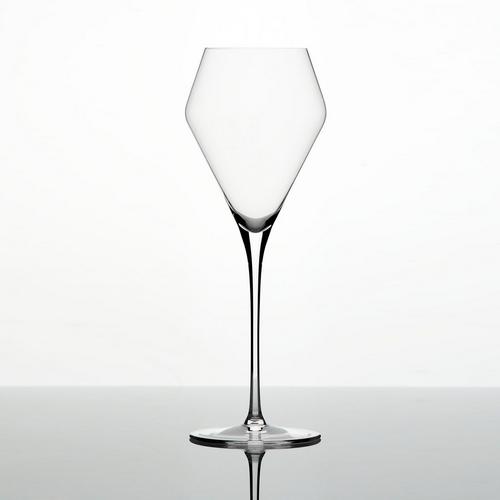What Is Cream Sherry? 9 Bottles to Try
Sherry wines have long gotten a bad rap—tagged as fusty and old-fashioned. But no style in the category has suffered more slings and arrows than cream Sherry.
“When I suggest it at the bar, people will say, ‘no, it’s sweet and gross, like my grandma’s Sherry,’” says Leanne Favre, beverage director for New York City’s Clover Club and Leyenda. Favre’s usual response? “That bottle was probably sitting on your grandma’s counter for the last 25, 30 years.”
As a category, Sherries are hamstrung by the very complexity and variety that make them so unique. “When people tell me they don’t like Sherry, it’s because they don’t really know them,” says Casilda Gurucharri, a Madrid-based sommelier. “To appreciate Sherry, you need to taste enough of them, and it helps to understand how they are made.” A flow chart doesn’t hurt either.
Sherries are fortified wines produced in southwestern Spain, within the so-called “Sherry Triangle,” a region whose D.O.—short for denominación de origen, the Spanish geographical indication—is known locally as Jerez. All Sherries are made with Palomino, Pedro Ximénez, and/or Moscatel grapes, and they many undergo an elaborate system of aging (criadera and solera), which involves blending a portion of newer wines with progressively older ones stored in neighboring casks. But that’s where the similarities end.
For the five popular drier styles—Fino, Manzanilla, Amontillado, Palo Cortado and Oloroso—the fermented grape juice produces a thin protective cap of yeast, known as “flor,” before the wine is fortified with grape spirit. Fino, Manzanilla and Amontillado age with their flor cap intact, while Oloroso receives a stronger dose of grape spirit, which prevents yeast development and exposes the wine to oxygen as it ages. (Palo Cortado is a bit of an outlier, with a toe in both maturation styles.) The naturally sweet Sherries, Pedro Ximénez (PX) and Moscatel, are made from overripe or sun-dried grapes.
What Is Cream Sherry?
To make cream Sherry, Oloroso is blended with a natural sweet Sherry (most commonly PX, though sometimes Moscatel) or grape must, in a process known as cabeceo, before the blend goes on to oxidative aging. First developed by British producer Harveys in 1882, the style was created for export to the United Kingdom. The company’s Bristol Cream did indeed travel well, thanks to the preservative effects of its high-sugar and alcohol content.
Despite the “cream” in its name, this style of Sherry is actually a mahogany-hued wine that balances the nutty aromas and full-bodied elegance of an Oloroso with the sweetness of PX. “The Oloroso adds acidity, which helps lighten the heavy sensation of residual sugar,” says Jordi Paronella, wine director for José Andrés Restaurants. The best examples of cream Sherry are well-integrated and far more multifaceted than the style’s reputation would have you believe. “They’re less cloying and more versatile than PX or Moscatel dessert wines,” he adds.
While some creams are made with Sherries that have aged for more than 20 or 30 years—earning them the designation of VOS or VORS (acronyms for the Latin rendering of Very Old Sherry and Very Old Rare Sherry, respectively)—they’re also ready to drink the moment you buy them.
“That’s one of its great advantages relative to other wines that require much more time in the bottle,” says Josep Roca of Spain’s El Celler de Can Roca, who earned the World’s Best Sommelier award by 50 Best in 2022. Roca sees something profound in this trait. “Jerez’s barrels safeguard hidden treasures,” he says. “Cream is a gift of time.”
9 Cream Sherries to Try
Lustau Capataz Andrés Deluxe Cream
Favre highlights this cream’s “wood notes and all the dried fruit you could want.” With a blending ratio of 85% Oloroso to 15% PX, it’s got the roundness of the sweeter wine while still capturing Oloroso’s acidity. “It’s not a sugar bomb,” she adds. “It’s just really elegant.” Although she uses it in cocktails, she says,“It stands up on its own, especially with savory food. The salinity and fat make you want to go back for another sip of the wine.”
$18.99
Wine.com
Lustau East India Solera Cream

Recommended by three experts interviewed for this story, this cream is an homage to the 17th-century spice trade, when Sherry aged slowly in casks on long ocean voyages. The Oloroso and PX mature separately for about 12 years before they are blended and aged for three more. Despite a higher PX content (20%) than the company’s Capataz Andrés, “the flavor is really rounded, and the two varieties meld together in this beautiful way,” says Favre. Paronella serves it straight or in cocktails. “It’s a mature wine that captures three centuries of history,” says Roca.
$27.49
Total Wine & More
González Byass Matusalem Cream VORS

Bearing the coveted VORS label, this Sherry ages for an average of 30 years—including 15 for its individual Oloroso and PX wines, and 15 more for the blend. “Even though it has about 130 grams of residual sugar per liter, the long aging makes it smooth and well-balanced,” says Paronella, who loves it with petit fours and chocolate.
Roca concurs. “This is one of the best wines in the category, concentrated, generous in its spicy notes, and with a long finish. It’s a jewel,” he says.
$59.99
Total Wine & More
Bodegas Tradición Cream VOS 20 Years

Produced by a winery that specializes in VOS and VORS Sherries, this cream is the product of a younger PX (five years of aging) but it also includes an Oloroso that has aged for more than 30. “Because it’s an older wine, it has more complex aromas, explains Gurucharri. Think raisins, figs and spices—and the sweetness of dried fruits is matched by the Oloroso’s peppery notes.
$86.99
Vivino
El Maestro Sierra Cream

Aged in historic casks, “it’s a seductive yet accessible wine,” says Roca. El Maestro Sierra was founded in 1830 by José Antonio Sierra, a leading barrel maker, making it an outlier among the aristocrat-run Jerez wineries of the time. Still helmed by his descendants, it was the first and remains one of the only Sherry wineries headed by women. Enjoy this cream with aged cheeses, pâtés or dessert.
$ Varies
Wine-Searcher
Williams & Humbert Canasta 20 Cream

This is another long-aged wine that has earned the VOS classification by the storied Williams & Humbert winery. Canasta 20 is “intense and delicious,” says Roca. It’s also one of the most popular creams in Spain, adds Gurucharri, with aromas of spices and dried fruits, and a velvety texture that makes it a good match for nuts and creamy cheeses.
$ Varies
Wine-Searcher
Isabela Valdespino Cream

This offering is made from Palomino grapes grown in the chalky soils of Macharnudo, a region considered the “Grand Cru” of Jerez. “It’s a wine that embraces its terroir,” says Roca. With notes of caramel, raisins and leather, and a welcome acidity, this cream is well-matched with roasted pork, mushrooms or chocolate desserts.
$19.99
Vivino
César Florido Cruz del Mar Cream

César Florido is located on the Atlantic coast, in the small town of Chipiona, an area that was added to the Jerez D.O. in 2022. Chipiona is where most of the region’s Muscat grapes are grown, so it’s not surprising that this bottling uses Moscatel—from the winery’s own vineyards—in lieu of PX. “The Moscatel makes it more aromatic and fruitier with floral and stone-fruit notes that you won’t find in a PX blend,” says Paronella.
$19.99
Wine.com
Harveys Bristol Cream

Yes, that Bristol cream. Despite being much maligned, Roca calls it accessible, light and aromatic, with notes of hazelnut and a shimmering mahogany hue. He enjoys it as an aperitif—over ice, with an orange peel and some juniper powder—although he also recommends it with gin. “It’s balanced and surprising.”
$16.47
Total Wine & More
FAQs
Is Cream Sherry the Same as Dry Sherry?
No, cream is classified as a sweet Sherry, a category that also includes pale cream and medium. All three types are produced by blending a dry Sherry with a naturally sweet one—or with concentrated grape must—before the blend undergoes the aging process. In the case of the best creams, the result is sweet but well-balanced.
How Do You Drink Cream Sherry?
The most traditional food pairings for Sherry are desserts, blue cheese and foie gras, but cream Sherry is capable of complementing a much wider range of foods. Beyond flan and churros, Favre has matched it with savory items on Leyenda’s Latin American menu, including tacos al pastor, whose warming spices work well with cream’s nutty Oloroso base.
Additionally, Roca has offered cream with foie gras, cacao and a dessert made with licorice. He would also pair it with umami-rich foods and spicy flavors, like kimchi, soy sauce, mole poblano and curry. “Its semi-sweet quality works well with heat,” he says. “When there’s a lot of capsaicin in a dish, cream [Sherry] softens that intensity.”
And it plays well in mixed drinks, too. “We use it a lot in cocktails,” says Favre, who often substitutes vermouth in a stirred drink with a little cream Sherry. “With its dried-fruit notes, it adds depth and complexity.” In Roca’s view, that complexity makes cream Sherry a natural ingredient for mixologists. “The process of blending is already inherent in the wine itself, which bridges two worlds with its aged and fresh components.”
Does Cream Sherry Go Bad?
An unopened bottle of cream will keep for a long time—a feature that’s baked into its DNA—but you should still treat it as you would any other unopened wine. Store it in a cool, dark environment. “If you keep the bottle in the kitchen during the hottest summer months, or near the radiator all winter, you will ruin it,” says Gurucharri.
Thanks to its high alcohol and sugar content, cream Sherry can easily last two months after opening, according to the official Jerez D.O. organization. Once opened, however, be sure to keep it tightly corked in the refrigerator.
When serving it straight, most experts suggest a temperature of about 46 to 53°F, though you could go higher if it’s a VOS or VORS wine, to allow the complex aromas the chance to open up. But Paronella always likes to err on the cooler side, “to make it more accessible and reduce the intensity of the sugar and the alcohol.”
Can You Cook with Cream Sherry?
Definitely. “It adds a sweet touch to a meat stew,” says Gurucharri, “or you can use it as part of a fruit compote.” Favre likes it in sauces and glazes, with pork or mushrooms, “when you’re looking for that richness or texture.” And it’s often incorporated into cakes and other baked goods. But the best dessert might be the simplest. “I just always want cream Sherry poured directly onto vanilla ice cream,” says Favre.
-

Alsace Aged Bronze and Travertine Bar Cart
-

Zalto Sweet Wine Glass


